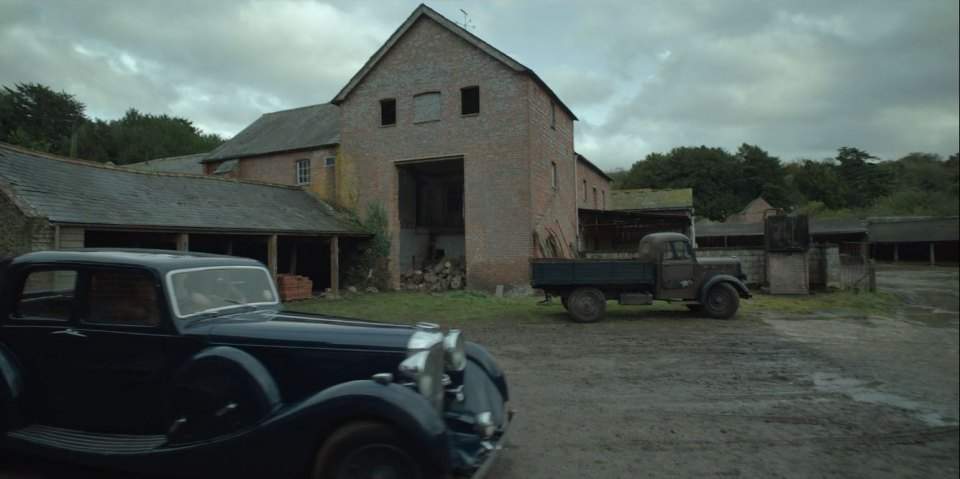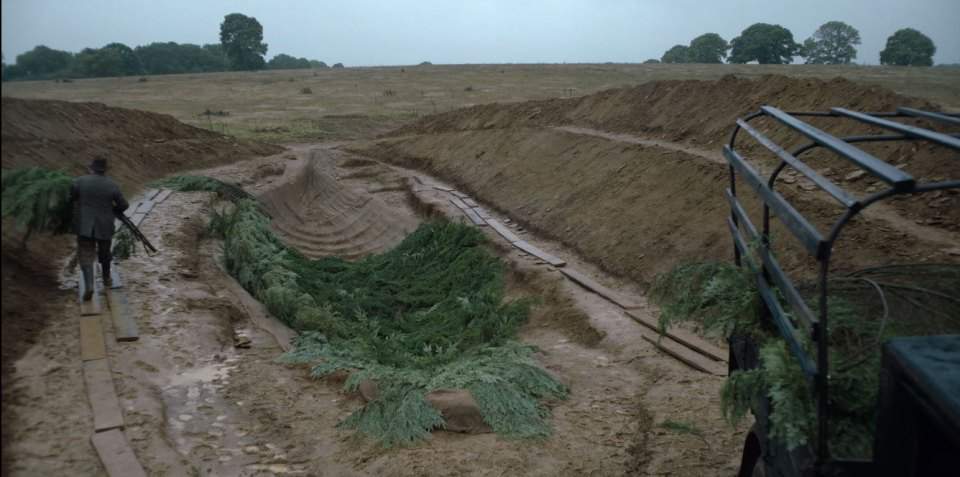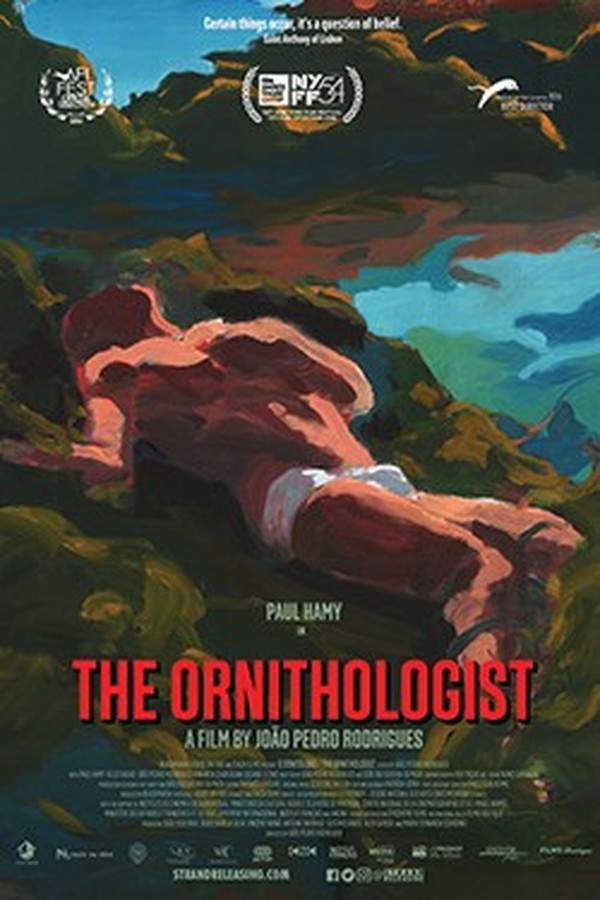The Dig 2021

During the 19th century in England, a determined archaeologist discovers a centuries-old mystery while excavating a ship buried within a forgotten cemetery. The vessel lies on the grounds of a reclusive woman’s estate, and as he investigates, he begins to unearth long-held secrets and confront a shadowy past. He must unravel the history of the ship and its connection to the estate’s owner.
Does The Dig have end credit scenes?
No!
The Dig does not have end credit scenes. You can leave when the credits roll.
Meet the Full Cast and Actors of The Dig
Explore the complete cast of The Dig, including both lead and supporting actors. Learn who plays each character, discover their past roles and achievements, and find out what makes this ensemble cast stand out in the world of film and television.

Lily James
Peggy Piggott

Ralph Fiennes
Basil Brown

Robert Wilfort
Billy Lyons

Johnny Flynn
Rory Lomax

Archie Barnes
Robert Pretty

Arsher Ali

Ben Chaplin

Carey Mulligan
Edith Pretty

Chris Wilson

Danny Webb
John Grateley

James Dryden
George Spooner

Joe Hurst
John Jacobs

Ken Stott

Monica Dolan
May Brown

Stephen Worrall
Ferryman
External Links and Streaming Options
Discover where to watch The Dig online, including streaming platforms, rental options, and official sources. Compare reviews, ratings, and in-depth movie information across sites like IMDb, TMDb, Wikipedia or Rotten Tomatoes.
Ratings and Reviews for The Dig
See how The Dig is rated across major platforms like IMDb, Metacritic, and TMDb. Compare audience scores and critic reviews to understand where The Dig stands among top-rated movies in its genre.

The Movie Echo Score
The Dig offers a visually striking and thoughtfully crafted drama that balances elegant imagery with understated performances. Many observers highlight its graceful cinematography and attention to period detail, while a few note that secondary subplots intermittently diffuse the main narrative thrust. Acting receives positive mention for subtle emotional precision, though the film’s reflective tone can undercut dramatic momentum. Overall, The Dig emerges as a contemplative period piece whose artistry outweighs modest storytelling lapses.
The Movie Echo Score Breakdown for The Dig

Art & Craft
In terms of art and craft, The Dig excels through its evocative cinematography and fluid camera movements. Reviewers frequently praise the understated color palette and carefully composed shots of the Suffolk landscape, noting a Malickian sensibility in framing. Production design subtly evokes the period without overwhelming the narrative, and editing maintains a measured rhythm. Overall, the film’s visual execution stands as a principal strength.

Character & Emotion
When it comes to character and emotion, The Dig benefits from nuanced lead performances that convey quiet resolve. Ralph Fiennes and Carey Mulligan receive consistent commendation for their subtlety, and supporting actors contribute occasional depth, though some secondary roles are seen as uneven. The film’s emotional resonance is tempered by a restrained tone that some find undercuts deeper engagement. Net, character work is solid but reserved.

Story & Flow
Regarding story and flow, The Dig presents a coherent narrative of archaeological discovery but is occasionally hindered by superfluous side plots. Critics and viewers note pacing slows midfilm when secondary romances and additional subplots are introduced, which detracts from the central excavation arc. While the historical premise and thematic reflections on the past engage audiences, the diluted narrative focus limits overall momentum and emotional impact.

Sensory Experience
In terms of sensory experience, The Dig crafts an immersive atmosphere primarily through its visual design. Poetic imagery of the English countryside and attentive sound design create a subdued yet engaging environment. The musical score subtly underscores emotional beats without dominating scenes, and the cohesive aesthetic reinforces the period setting. Altogether, the film’s sensory elements consistently enhance its contemplative tone.

Rewatch Factor
As for the rewatch factor, The Dig may appeal to viewers who appreciate visual subtlety and restrained storytelling on repeat viewings. The film’s measured pacing and gentle thematic depth offer rewards for those attentive to small details. However, audiences seeking dynamic twists or high emotional peaks may find limited impetus for revisiting. In summary, the film holds moderate replay value for its craftsmanship rather than narrative surprises.

73
Metascore
6.9
User Score


87%
TOMATOMETER

78%
User Score

7.1 /10
IMDb Rating

69
%
User Score

3.4
From 105 fan ratings

3.57/5
From 7 fan ratings
Take the Ultimate The Dig Movie Quiz
Challenge your knowledge of The Dig with this fun and interactive movie quiz. Test yourself on key plot points, iconic characters, hidden details, and memorable moments to see how well you really know the film.
The Dig 2021 Quiz: Test your knowledge on the intricate details of 'The Dig' and its characters.
Who is the self-taught archaeologist hired by Edith Pretty?
Basil Brown
Rory Lomax
Edith Pretty
Phillips
Show hint
Awards & Nominations for The Dig
Discover all the awards and nominations received by The Dig, from Oscars to film festival honors. Learn how The Dig and its cast and crew have been recognized by critics and the industry alike.
74th British Academy Film Awards 2021
Best Adapted Screenplay
Best Costume Design
Best Makeup and Hair
Best Production Design
Outstanding British Film
36th Artios Awards 2021
Studio or Independent – Drama
16th Irish Film & Television Academy Awards 2020

Best Actress in a Supporting Role
Best Actor in a Supporting Role
Full Plot Summary and Ending Explained for The Dig
Read the complete plot summary of The Dig, including all major events, twists, and the full ending explained in detail. Explore key characters, themes, hidden meanings, and everything you need to understand the story from beginning to end.
In the year 1939, the story unfolds as Suffolk landowner Edith Pretty hires local self-taught archaeologist and excavator Basil Brown to explore the large burial mounds at her serene estate in Sutton Hoo. Initially, she proposes a payment equivalent to the minimal agricultural wage, similar to what he earned from the Ipswich Museum. However, Brown finds this offer insufficient and negotiates a better deal of £2 a week, which she gladly agrees to.
Despite attempts by his former employers to lure him to excavate a Roman villa they believe to be more significant, Brown holds steadfast, proposing that the mounds might, in fact, date back to the Anglo-Saxon period rather than the more recognized Viking era. As he undertakes his excavation with a few estate assistants, he carefully uncovers the most promising of the mounds. There’s a harrowing moment when a trench unexpectedly collapses on him, but he is thankfully rescued just in time.
As the narrative progresses, Brown spends more time with Edith, a widow facing her own challenges, and her spirited young son, Robert Pretty. While neglecting letters from his own wife, May, he becomes deeply involved in their lives. Edith faces her own health issues, receiving stern advice from her doctor to minimize stress.
One of the pivotal moments occurs when Brown discovers iron rivets from a ship, hinting that the burial site may belong to someone of significant status, potentially a king. Local archaeologist James Reid Moir attempts to join the excavation but is turned away. Instead, Edith brings her cousin Rory Lomax on board to assist. News of their discoveries spreads rapidly, attracting the attention of Cambridge archaeologist Charles Phillips, who declares the site of national importance and takes control of the dig by order of the Office of Works.
As the threat of war looms, Philips enlarges the team, incorporating Peggy Piggott, who goes on to unveil the first distinctly Anglo-Saxon artifact. Although Brown initially retains a position to maintain order at the site, Edith insists on his return to excavating. Ultimately, he unearths a Merovingian Tremissis, a small but significant gold coin from Late Antiquity, leading Philips to officially classify the location as one of considerable historical value.
Philips expresses the desire to send the discovered items to the British Museum, but Edith, concerned over potential damage from air raids in London, declares her ownership rights. An inquest verifies her claim to the ship and its invaluable grave goods; however, as her health deteriorates, her spirit begins to wane.
Meanwhile, Peggy, feeling disregarded by her husband Stuart—who harbors his own secret—embarks on a romance with Rory, but their relationship is cut short as he is soon drafted into the Royal Air Force. In a heartfelt gesture, Edith decides to donate the Sutton Hoo treasures to the British Museum, ensuring that Brown is recognized for his invaluable contributions. Tragically, she passes away in 1942.
Years later, it is revealed in a note that the treasures were hidden in the London Underground during the war and were first displayed—without Basil Brown receiving any recognition—nine long years after Edith’s death. It wasn’t until recently that Brown was rightly acknowledged for his efforts, and his name now graces a permanent place alongside Edith Pretty’s at the British Museum.
Uncover the Details: Timeline, Characters, Themes, and Beyond!

Coming soon on iOS and Android
The Plot Explained Mobile App
From blockbusters to hidden gems — dive into movie stories anytime, anywhere. Save your favorites, discover plots faster, and never miss a twist again.
Sign up to be the first to know when we launch. Your email stays private — always.
Watch Trailers, Clips & Behind-the-Scenes for The Dig
Watch official trailers, exclusive clips, cast interviews, and behind-the-scenes footage from The Dig. Dive deeper into the making of the film, its standout moments, and key production insights.
Cars Featured in The Dig
Explore all cars featured in The Dig, including their makes, models, scenes they appear in, and their significance to the plot. A must-read for car enthusiasts and movie buffs alike.
The Dig Themes and Keywords
Discover the central themes, ideas, and keywords that define the movie’s story, tone, and message. Analyze the film’s deeper meanings, genre influences, and recurring concepts.
The Dig Other Names and Titles
Explore the various alternative titles, translations, and other names used for The Dig across different regions and languages. Understand how the film is marketed and recognized worldwide.
Similar Movies To The Dig You Should Know About
Browse a curated list of movies similar in genre, tone, characters, or story structure. Discover new titles like the one you're watching, perfect for fans of related plots, vibes, or cinematic styles.
Quick Links: Summary, Cast, Ratings, More

What's After the Movie?
Not sure whether to stay after the credits? Find out!
Explore Our Movie Platform
New Movie Releases (2025)
Famous Movie Actors
Top Film Production Studios
Movie Plot Summaries & Endings
Major Movie Awards & Winners
Best Concert Films & Music Documentaries
Movie Collections and Curated Lists
© 2025 What's After the Movie. All rights reserved.











































